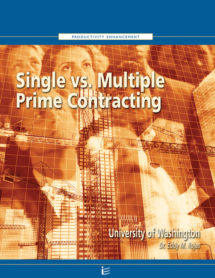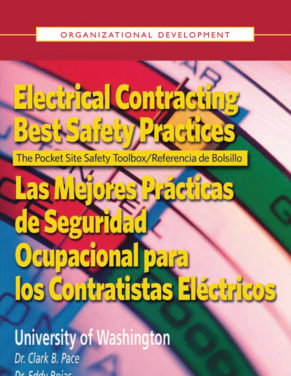Single vs. Multiple Prime Contracting
Policies regarding public building construction affect the interests of taxpayers, construction authorities, general contractors, specialty contractors, and other stakeholders that participate in the construction process. The debate as to the optimal form such policies should take at the state level has become an ongoing struggle among the competing interests of the parties involved. This study presents a systemic analysis of the main issues regarding simple vs. multiple prime contracting with the objective of providing actual data to illuminate this debate.
Based on a statistical analysis of project bids and final costs from a national sample of state construction projects, this study shows that public construction projects organized with multiple prime contracts tend to have 5 percent less direct costs than projects using a single prime contractor. Moreover, about 80 percent of these savings are attributable to lower bid costs for multiple prime projects.
The results of this study are in agreement with theoretical bidding models and efficient risk allocation models. Theoretical bidding models suggest that, in the absence of disruptions, multiple prime projects should have lower direct costs than single prime jobs. Efficient cost allocation models suggest that when specialty contractors do not bear the risks associated with the single prime contracting method (i.e., bid-shopping and payment delays) they are willing to lower their bids and forgo the premium they would normally charge, as seems to be the case in multiple prime jobs.
From a public construction authority viewpoint, comparing single and multiple prime contracting methods is difficult due to the fact that some of the pros and cons of both approaches are not evident. For example, when public construction authorities use the single prime contracting method, the benefits of better coordination and accountability are evident. However, the higher costs associated with the risk premiums charged by specialty contractors are not, as the public construction authority would never observe the lower amounts the specialty contractors would have likely bid under the multiple prime approach. On the other hand, when public construction authorities use the multiple prime method, the additional coordination and administrative efforts are evident. However, the savings associated with lower specialty contractors bids are not, as the public construction authority would never see the higher amounts the specialty contractors would have likely bid under the single prime approach. Therefore, it is not surprising that public construction authorities may express a preference for the single prime contracting approach, even though the evidence in this study suggests that the multiple prime contracting method tends to be less expensive.












